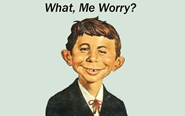Market Data

October 28, 2020
Schultz: Turnout of Key Voters Could Decide Election
Written by Tim Triplett
The final outcome of next week’s presidential election may well boil down to the difference in turnout–in just a handful of counties in three pivotal swing states–among two key demographics: non-college-educated working class males for Trump vs. college-educated suburban women for Biden, predicts Dr. David Schultz, political analyst and professor of political science and legal studies at Hamline University in St. Paul, Minn. Schultz was the featured speaker during Steel Market Update’s Community Chat Webinar on Wednesday.
Like the last presidential election when Donald Trump prevailed over Hillary Clinton even though she won the popular vote, this election is all about the electoral college, Shultz said. Based on past history and the uneven distribution of Democrats and Republicans across the country, the outcome of the vote is nearly certain in 43 of the 50 states. That leaves just seven states where the majority vote, and the electoral win, is more difficult to predict: Arizona, Florida, Michigan, Minnesota, North Carolina, Pennsylvania and Wisconsin.
Given the unprecedented polarization of Republicans and Democrats, and the historic number who have cast ballots early, there are relatively few undecideds still left to persuade. Heading into the election four years ago, 12-13 percent of voters were still undecided; this year just 4-5 percent. Which makes the turnout between now and election day even more critical for each candidate, Schultz said.
As in the last election, Schultz believes the final electoral tally could come down to the turnout in Michigan, Pennsylvania and Wisconsin. Refining his prediction even further, certain counties will be critical, including Wayne County (Detroit) in Michigan, Brown and Milwaukee Counties in Wisconsin, and Lackawanna County in western Pennsylvania. “There are only a small number of swing counties in a few swing states, and only a small number of undecided voters in those swing counties who are wondering, do I show up to vote or not? They will decide this election. This election could boil down to less than 50,000 voters.”
Looking to the future, Schultz offered a positive note, predicting that the political partisanship that has so polarized the nation will dissipate over the next decade. “This is the beginning of the end for the baby boom generation in American politics. The boomers have been the dominant generation of voters for a long time. The millennials and Gen Z now make up a larger percentage of the electorate. The two generations coming up have far more ideological coherence than we have seen in the past.”







